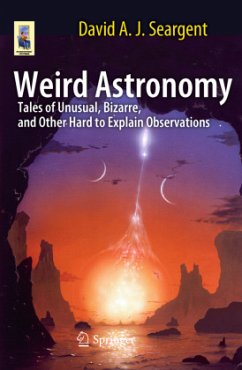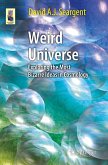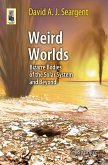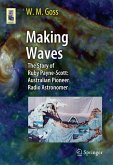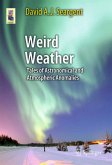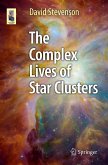Weird Astronomy appeals to all who are interested in unusual celestial phenomena, whether they be amateur or professional astronomers or science buffs who just enjoy reading of odd coincidences, unexplained observations, and reports from space probes that "don't quite fit." This book relates a variety of "unusual" astronomical observations - unusual in the sense of refusing to fit easily into accepted thinking, or unusual in the observation having been made under difficult or extreme circumstances. Although some of the topics covered are instances of "bad astronomy," most are not. Some of the observations recorded here have actually turned out to be important scientific breakthroughs. Included are some amusing anecdotes (such as the incident involving "potassium flares" in ordinary stars and the story of Abba 1, the solar system's own flare star!), but the book's purpose is not to ridicule those who report anomalous observations, nor is it to challenge scientific orthodoxy. It is more to demonstrate how what's "weird" often turns out to be far more significant than observations of what we expect to see.
From the reviews:
"It's one of the most evocative, incisive and fascinating books I've read on astronomy. ... Seargent's clear, intelligent and insightful prose considers and summarises all sides of any debate. ... Essentially, he supplies you with the information, then allows you to decide. ... Seargent also offers UFO researchers a feast for thought. ... Seargent suggests that astronomers might find 'very interesting phenomena ... . The book is a masterclass in popular science writing ... ." (Mark Greener, Fortean Times, April, 2011)
"Thank you Goodreads First Reads for this free book. This is a great book. Full of interesting and unusual events. A must read for any astronomy hobbyists." (Landy, Goodreads, June, 2011)
"WOW!!! this book was really amazing!!! i mean im not that into space as many people but this book was really interesting and it got me to think. ... I had no idea of how many theories regarding space there were!!! i was amazed by how many pictures and data that has come from space that id never even knew existed!!!" (Magdalena, Goodreads, June, 2011)
"This is a much lighter, much more entertaining read ... . One of the best things about the book is that it is littered with lots of suggestions for experiments and observations the reader can do themselves, to gain a better understanding of how the night sky works ... . All in all a very enjoyable read, written in a friendly, informal style. Definitely a book to have within easy reach for those nights when the clouds refuse to part." (Cumbrian Sky, May, 2011)
"Any book which looks at the lighter side of astronomy is always welcome and this is both entertaining and engaging." (Spaceflight, Vol. 54 (1), January, 2012)
"It's one of the most evocative, incisive and fascinating books I've read on astronomy. ... Seargent's clear, intelligent and insightful prose considers and summarises all sides of any debate. ... Essentially, he supplies you with the information, then allows you to decide. ... Seargent also offers UFO researchers a feast for thought. ... Seargent suggests that astronomers might find 'very interesting phenomena ... . The book is a masterclass in popular science writing ... ." (Mark Greener, Fortean Times, April, 2011)
"Thank you Goodreads First Reads for this free book. This is a great book. Full of interesting and unusual events. A must read for any astronomy hobbyists." (Landy, Goodreads, June, 2011)
"WOW!!! this book was really amazing!!! i mean im not that into space as many people but this book was really interesting and it got me to think. ... I had no idea of how many theories regarding space there were!!! i was amazed by how many pictures and data that has come from space that id never even knew existed!!!" (Magdalena, Goodreads, June, 2011)
"This is a much lighter, much more entertaining read ... . One of the best things about the book is that it is littered with lots of suggestions for experiments and observations the reader can do themselves, to gain a better understanding of how the night sky works ... . All in all a very enjoyable read, written in a friendly, informal style. Definitely a book to have within easy reach for those nights when the clouds refuse to part." (Cumbrian Sky, May, 2011)
"Any book which looks at the lighter side of astronomy is always welcome and this is both entertaining and engaging." (Spaceflight, Vol. 54 (1), January, 2012)

